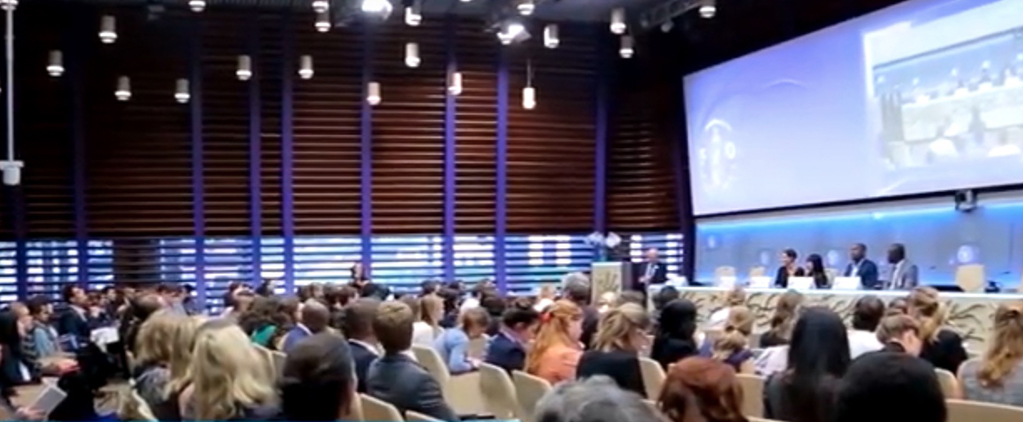
The VGGT are the internationally negotiated framework to improve land governance. With inputs from over 1000 stakeholders with different cultural backgrounds from all regions of the world, the VGGT were endorsed by the Committee on World Food Security on 11 May 2012.
The VGGT promote the recognition and protection of all forms of tenure, including formal, informal and customary and all legitimate tenure rights, including property rights, use rights, rights of passage and seasonal rights. The VGGT are voluntary. Yet, the high-level endorsement and use around the world provide significant momentum and scope for their implementation and monitoring.
Purpose
The VGGT seek to improve tenure governance with the overall goals of food security and the progressive realization of the right to adequate food, poverty eradication, sustainable livelihoods, social stability, housing security, rural development, environmental protection and sustainable social and economic development.
The VGGT provide guidance and information on internationally accepted practices; contribute to the development of policy, legal and organizational frameworks; enhance the transparency and functioning of tenure systems; strengthen the capacities and operations of all persons concerned with tenure governance; and promote the cooperation between actors.
Contents
The VGGT provide a comprehensive overview of the areas relevant to improving governance of tenure and their linkages.
Part 1: Preliminary and Part 2: General Matters
Parts 1 and 2 of the VGGT are the basis upon which the proceeding parts of the VGGT, on specific topics, should be read. Parts 1 and 2 draw out the objective and nature and scope of the VGGT. In addition, they provide guidance that applies to all aspects of tenure governance and hence also the whole VGGT document, by setting out guiding principles and addressing rights and responsibilities, policy legal and organizational frameworks and the delivery of services.
Part 3: Legal, recognition and allocation of tenure rights and duties, Part 4: Transfers and other changes to tenure rights and duties and-Part 5: Administration of tenure
These parts provide guidance on topics that are common to tenure governance. Part 3, includes provisions on the legal recognition and allocation of tenure rights of indigenous peoples and other communities with customary tenure systems, as well as informal tenure and the initial allocation of tenure rights, that are owned or controlled by the public sector. Part 4, provides guidance on situations in which existing rights and associated duties are transferred or reallocated, transactions in tenure rights as a result of investments, land consolidation and other readjustment approaches, restitution, redistributive reforms or expropriation. Part 5, deals with governance of the administration of tenure, with regard to records of tenure rights, valuation, taxation, regulated spatial planning, resolution of disputes over tenure rights and transboundary matters.
Part 6: Responses to climate change and emergencies
Part 6, provides guidance on the preparation and implementation of strategies for extreme situations, where many people could be displaced, including climate change, natural disasters and conflicts.
Part 7: Promotion, implementation, monitoring and evaluation.
This part reiterates some of the principle and process-related guidance given in the VGGT and gives additional practical provisions on how the VGGT should be implemented, monitored and evaluated.
History
In 2009 and 2010, the Food and Agriculture Organization (FAO), in collaboration with partners, organized ten regional multi-stakeholder consultations, a private sector and four civil society consultations, involving over 1000 people from over 130 countries. In 2011, issues and actions identified during the consultations helped shape the zero draft of the VGGT. In addition, the zero draft underwent a global, public e-consultation.
In 2011 and 2012, the zero draft of the VGGT formed the basis for three rounds of inter-governmental negotiations under the auspices of the Committee on World Food Security (CFS). As a result of the CFS 2009 reform, negotiations included participation by CSOs, the private sector, farmers organizations and academia.
On 11 May 2012, the final text of the VGGT was endorsed by the CFS.
Learn more about the Stakeholder views on the development process of the VGGT and during the negotiations:
- Paper: Fostering a new global consensus: The Voluntary Guidelines on the Governance of Tenure. D. Palmer, M. Toerhoenen, P. Munro-Faure, A. Arial. FAO Land Tenure Journal. FAO. Rome. 2012.
- Paper: FAO Land Tenure Working Paper No. 25: Reaching consensus on the governance of tenure: Development of the Voluntary Guidelines as seen by stakeholders. FAO. Rome. 2014.
- Video: Endorsement of the VGGT
- Video: Stakeholder interviews during VGGT negotiations
